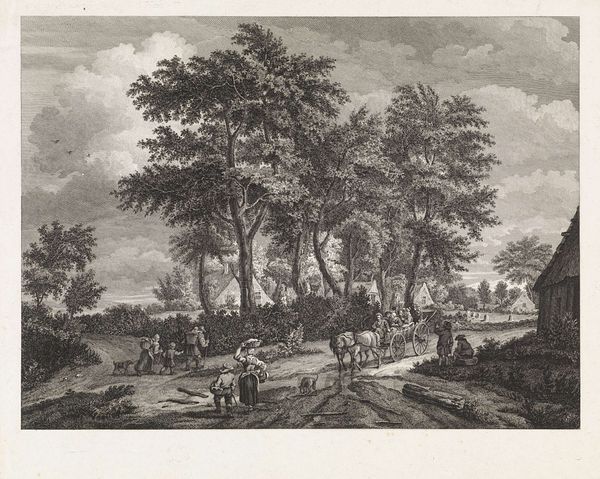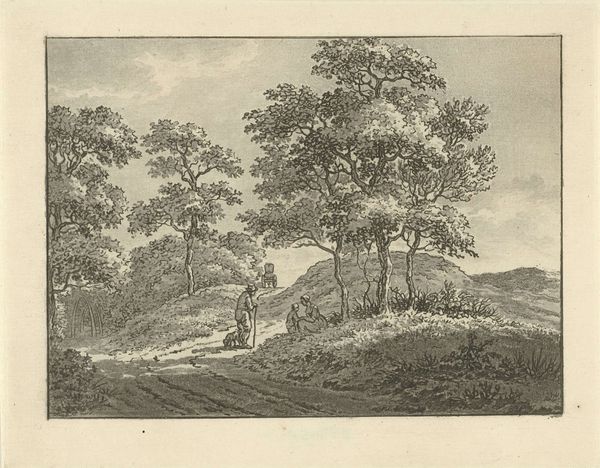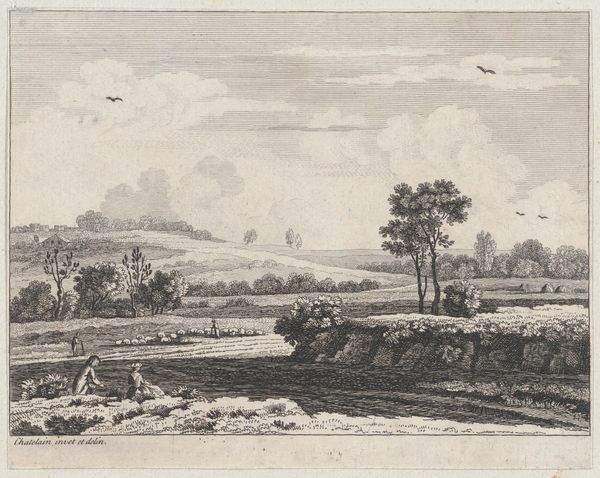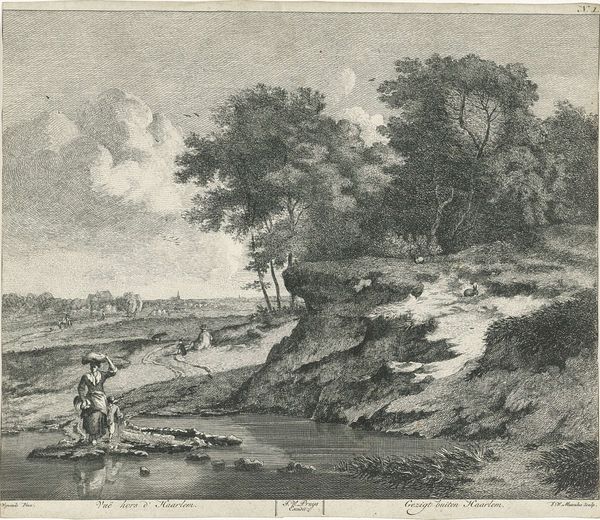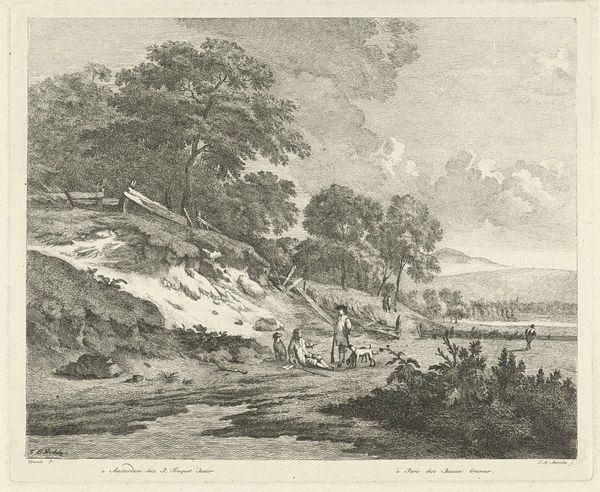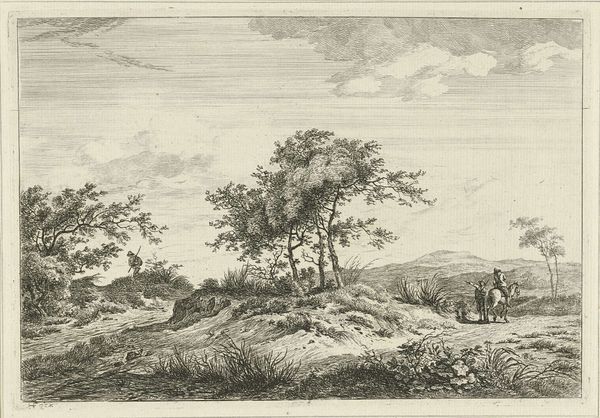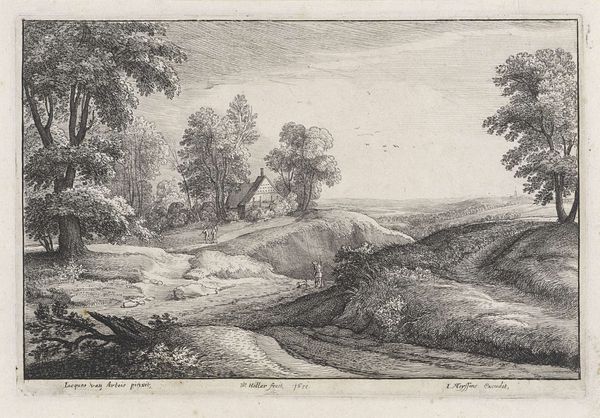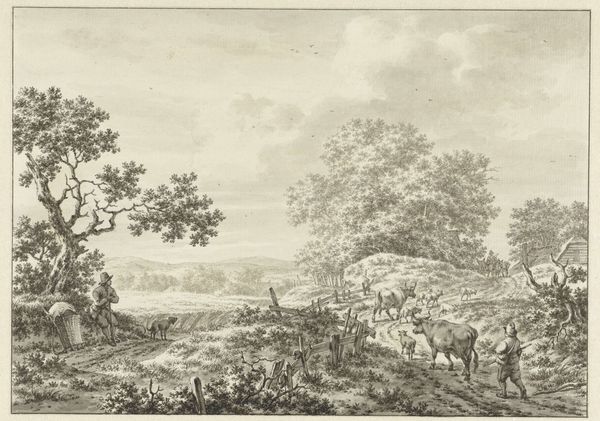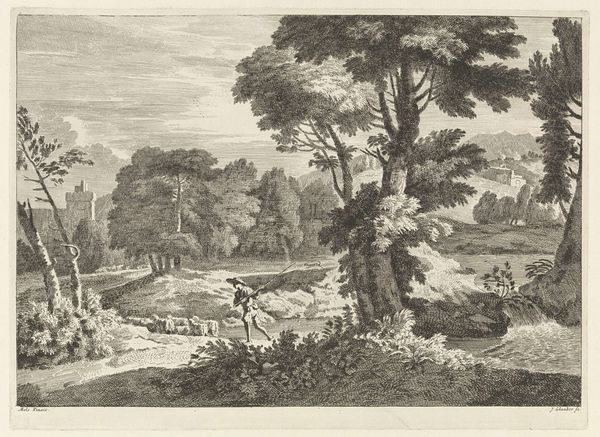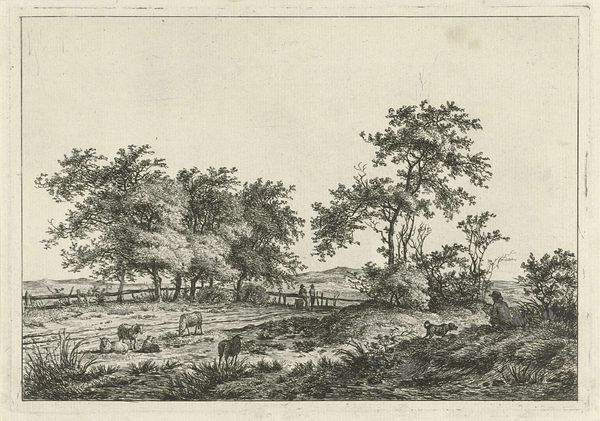
drawing, ink, pencil, pen
#
drawing
#
neoclassicism
#
landscape
#
ink
#
pencil
#
pen
Dimensions: height 214 mm, width 295 mm
Copyright: Rijks Museum: Open Domain
Editor: So, here we have Vincent Jansz. van der Vinne's "Legerkamp in de duinen bij Overveen in juli 1803," a drawing rendered in ink and pencil. There's a strong sense of quiet order amidst the encampment scene. What kind of story do you think these symbols and images are trying to tell us? Curator: Well, the seemingly calm scene belies a moment of great anxiety for the Dutch. The imagery suggests a period of waiting and preparation. Look at the precise arrangement of the tents; they're symbols of impermanence but also of rigidly imposed order. Do you see any classical references or allusions within this meticulously crafted landscape? Editor: I do see how the grouping of figures, especially those marching toward the right, resemble processional scenes found on classical friezes. And are those tents evoking a kind of Roman military precision? Curator: Precisely! The artist is intentionally framing a contemporary scene—the very real threat of Napoleonic invasion—within a visual language drawn from the past, Neoclassicism. It implies both a desire for order and a reaching back to historical models of resistance and resilience. The landscape itself is symbolic, with open, vulnerable spaces. How do these spaces make you feel? Editor: The vulnerability of the wide-open landscape and that looming sky gives me a feeling of impending threat. There's a stark contrast between the human attempt to impose order and the overwhelming power of the natural world. Curator: Exactly! It’s a symbolic interplay, that struggle between control and the uncontrollable. The soldiers aren't just figures in a landscape; they embody a cultural memory of resistance, striving for order in a world that feels inherently chaotic. Editor: It’s amazing how much can be read from such a seemingly straightforward image once you begin to decode the symbols. I initially saw only a peaceful encampment, but now it feels charged with history and anxiety. Curator: Yes, the symbols, drawn from history and the surrounding world, make Van de Vinne’s sketch so poignant and compelling. It makes you think about what symbols might future generations pull from *our* era?
Comments
No comments
Be the first to comment and join the conversation on the ultimate creative platform.
